It is not a bad idea to add a few house plants to your RV. Plants give a more homely feeling to your surrounding. But their benefits do not stop there. These plants can help to calm your mind, improve air quality and add decoration to your living space.
NASA study shows indoor plants can remove a considerable amount of benzene, trichloroethylene, and formaldehyde from the air. These chemicals are off-gassing from some of the internal build materials in RVs.
There are quite a few house plants out there. But most of them are may not suitable for an RV. You might have to be extra carefully picky if you are experiencing a spacing issue in your tiny home. It might be challenging to find an adequate space for a larger plant.
Table of Contents
Things that need to consider
Small or trailing plants can place on unused edges, which gives all the benefits and the best use of the space.
Some plants need watering every other day, while some only need it once every two weeks. Pick plants that can survive the longest time with a minimum water supply.
Some indoor plants can cause allergic reactions for some people. Add plants to your living space one at a time and monitor for possible allergic reactions.
Most suitable plants for an RV or Van
Succulents
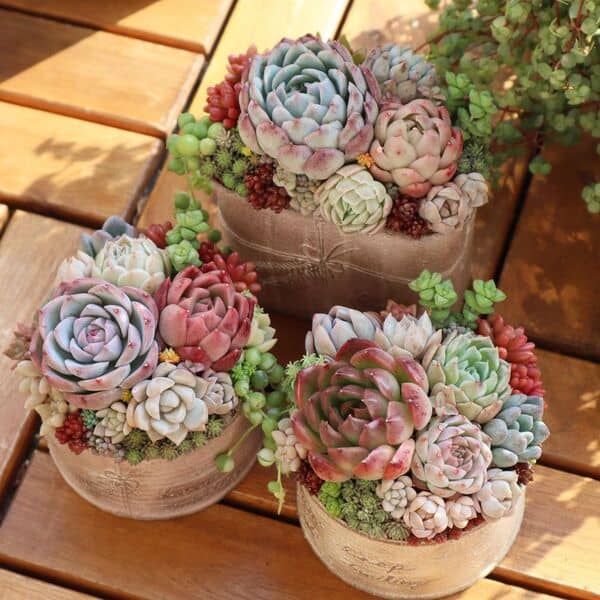
Succulents come in all kinds of shapes, colors, and sizes. These thickened and fleshy leaves or stems plants are very hardy. They are very popular as indoor plants, especially their ability to deal with low light and fewer maintenance requirements.
Most succulents grow in harsh environmental conditions with minimum water supply. So don’t overwater your plants. Just wet the soil but not to the point of dripping wet. Use suitable potting mixes explicitly sold for succulents.
There are dozen of succulents varieties out there. Some prefer direct sunlight exposure, while some plants prefer indirect sunlight. Do some research before picking a specific species.
Keep them near the windows and ensure they get at least 4 – 6 hours of daylight.
Air Plants (Tillandsias)
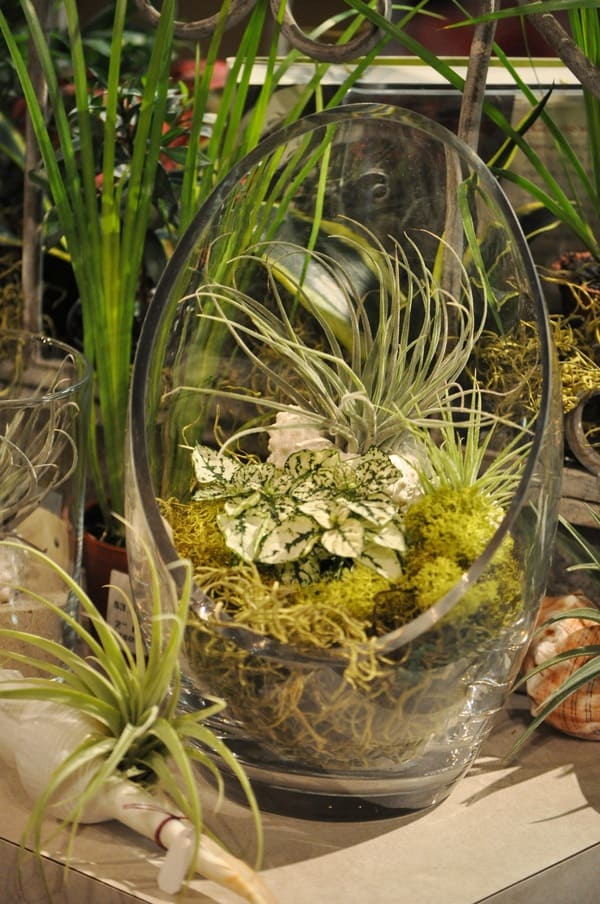
Air plants do not require any soil to grow. They grow in trees in nature and can adapt to changing environments. There are hundreds of variants of these air plants available.
It is crucial to soak air plants in water for 20 minutes to an hour every week to 10 days. Don’t use tap water or filtered water. Water from rainwater, pond, creek, a lake is the best option to use for this purpose. Springwater is another option if other sources are hard to find.
Make sure air plants are arid before placing them back. Occasionally mist air plants if the ambient environment is drier but makes sure not to the point of dripping water from leaves.
Lucky bamboo (Dracaena sanderiana)
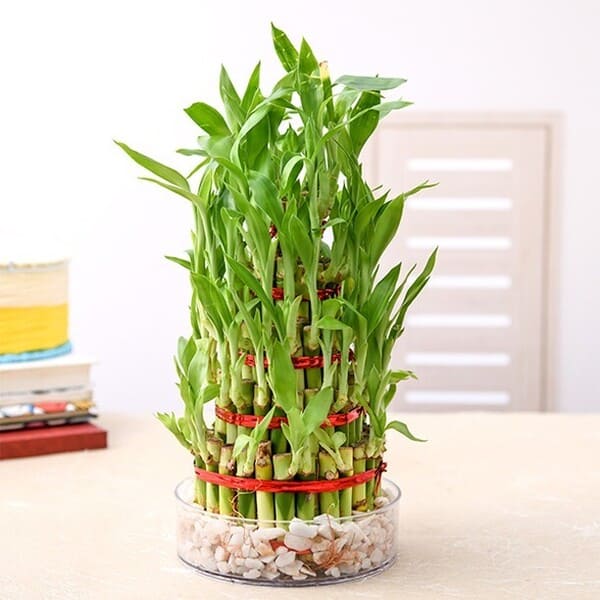
Lucky bamboo grows best in filtered, indirect sunlight with a bit of care. These eye-catching plants are popular due to their sculptural, swirls shapes.
Make sure to grow on well-drained, rich potting soil. Don’t soak the soil with water. Also, this can grow on a vase that fills with water with or without pebbles. Change the water weekly if you grow this plant on a water vase.
It says lucky bamboo brings good luck, wealth, and fortune as per Feng Shui and Vastu Shastra.
Lucky bamboo could be toxic for pets.
Heartleaf (Philodendron Scandens)
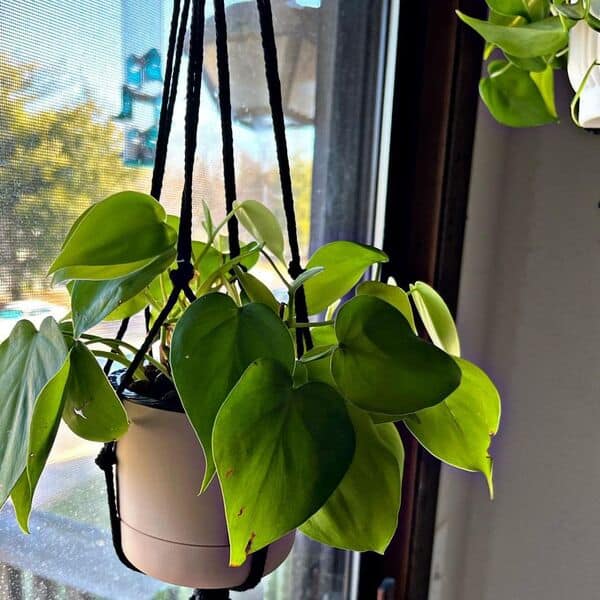
Heartleaf plants can hang on a ceiling hook or be placed on a shelf and let it trail. So these plants are trendy among mobile home dwellers since they can easily be put in an unused space.
This plant needs bright, indirect light and grows on a well-drained potting mix. Mix with perlite for better drainage.
Heartleaf is toxic to pets and children if digested.
Pothos / Devil’s Ivy (Epipremnum Aureum)
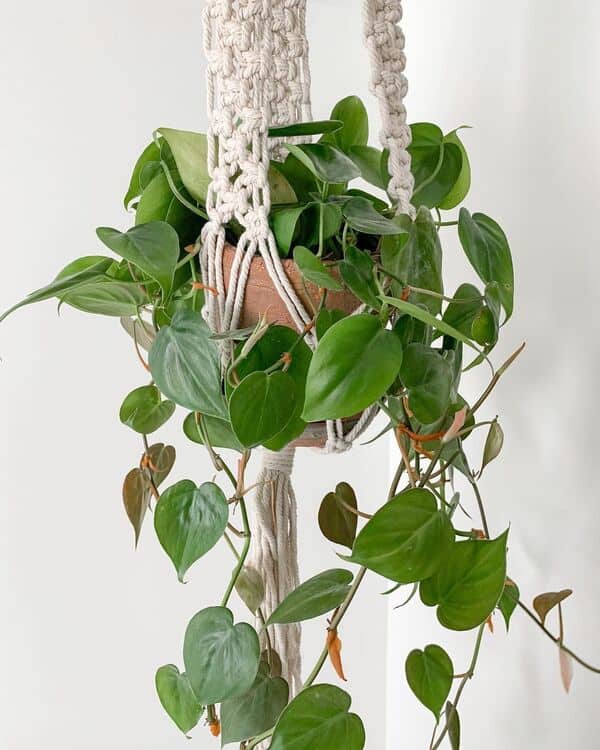
Pothos is one of the easiest plants to grow and maintain. You can get a nice decoration to your living space with their trailing vines.
Pothos perform well under bright, indirect sunlight. Pothos foliages contain lovely patterns that can disappear without getting enough light. Choose well-drained potting mix as a plant medium. Do not soak the soil with water since it can rot the plant’s roots.
Pothos are toxic to pets and children if digested.
Peace Lilies (Spathiphyllum-family)
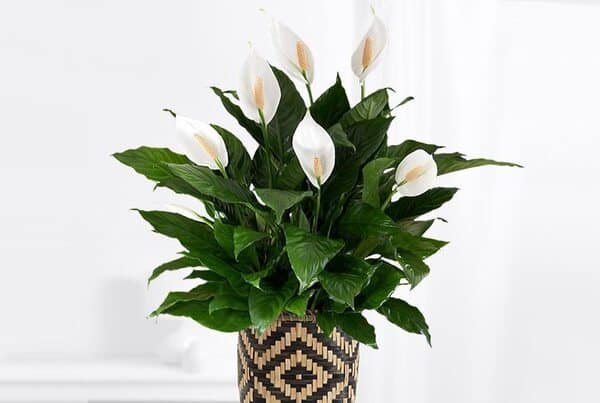
Peace lilies are flowering houseplants. Long-lasting flowers hover over the foliage.
This plant grows tall up to 3 feet. So something this may not be suitable for a small space like a campervan.
Peace lilies prefer not to expose to direct sunlight. Use a well-draining mixture and place the plant in a clay or terracotta pot to wick away excess moisture.
The peace lily is toxic to pets and children if digested.
Snake plant (Dracaena trifasciata)
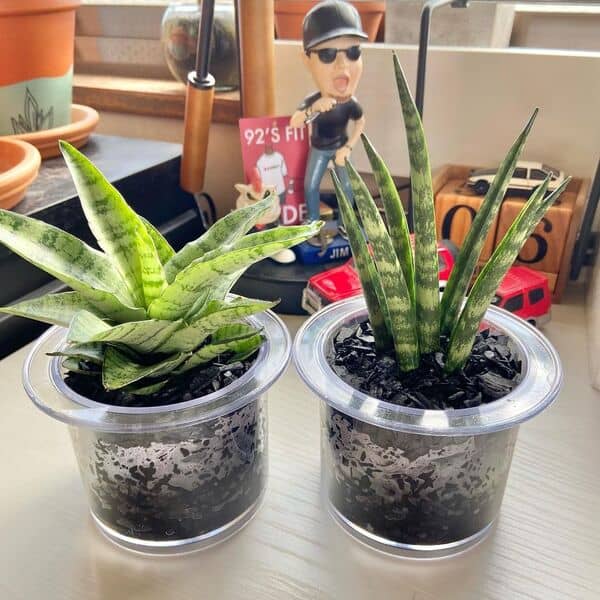
Snake plants consider one of the hardy species of indoor plants. They can survive with low light and a little bit of water. You can neglect it for weeks, yet it will look fresh.
There are around 70 different varieties of snake plants, and they can grow from 6 inches to 12 feet. Their leaf can vary in size and shape. Many have green-banded patterns.
Snake plants prefer indirect light. But it can adapt to direct sunlight as well. Use sandier soil mix with low peat content. Never watering too much.
Snake plant is toxic to pets and children if digested.
How to Secure your Plants
Plants need to be correctly secure to ensure they do not tip over during the vehicle moves. Topping could cause severe damage to the plant, and spilled soil make a real mess.
There are a couple of options to secure pots based on their size.
- Using magnets
Glue a strong flat magnet to the bottom of the pot. This method will work for small plants like succulents. Do not cover the drain hole with the magnet.
- Using hangers
Macramé hangers are well suited for this purpose. They provide nice decor to the space, and trailing vines of plants can go through their holes that make a nice look. Plants like Pothos, Heartleaf nicely suit this.
- Using potholder wall-mounted rings.
These rings usually come with 4, 6, 8 inches and, most of the time, perfectly fit the relevant pots without any issue.
- Using glass terrarium jars
You can start a hobby by creating closed, self-sustaining jar terrariums. Those are beautiful as well as enjoyable tasks.
Do not hang or place any plant that obstructs the driver’s view or falls into driver/passengers in the event of an accident.
Maintenance
- No plant can grow in the dark. Keep plants close to windows or doors. But some plants don’t like direct sunlight, so make sure they don’t get a direct hit.
- Expose plants for early morning sunlight once a month for around 15 minutes. This method will help the plant build up its energy reserves without completely depleting them.
- Overwatering is one of the main reasons for plants to die suddenly. Make sure soil gets dry between watering cycles.
- Mix soil with a material like a perlite, calcined clay, vermiculite to better drainage.
- Plants have desired temperature range. Too hot or cold can kill the plant. Be cautious on hot sunny days, and don’t leave plants inside the van for hours. Switch on fans to make air circulation. If possible, use a dripping system to water while you are away.
- Don’t use outdoor or backyard soil, and always use the proper potting mix.
Each state has a set of regulations imposed to minimize the spread of harmful insects, diseases, pests, and other invasive plants. Make aware of these rules if you travel between states.
You usually don’t face any issue as long as plants are pest-free, healthy, and that particular variety permit on that statue. Refer to this National Plant Board website to find state-specific rules and regulations.
